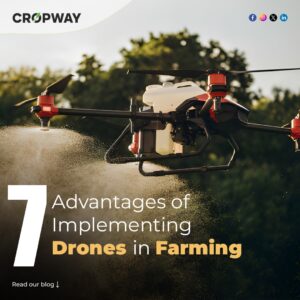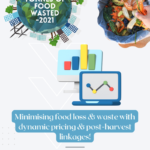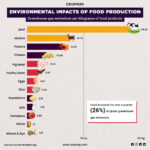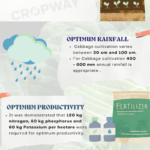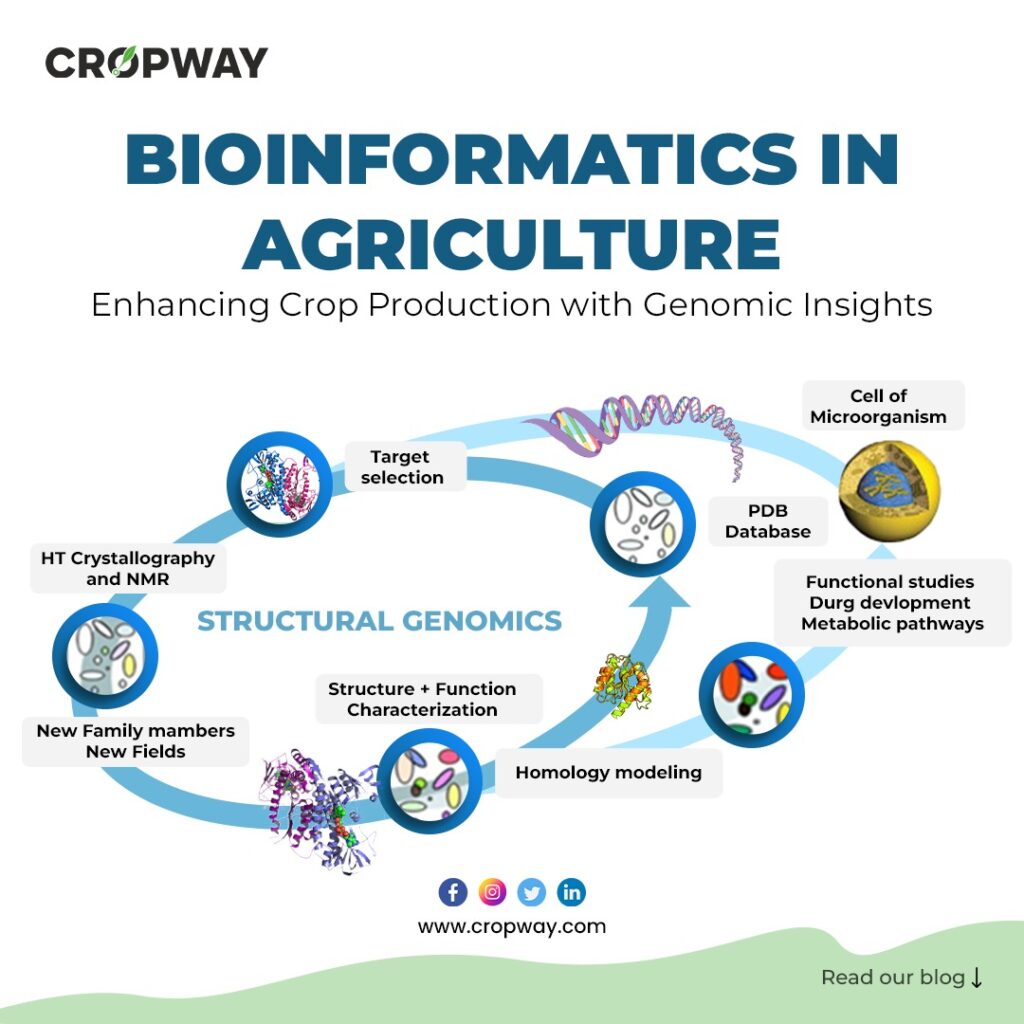
The significance of bioinformatics is increasingly prominent in the era of remarkable advancements in omics technologies, providing crucial support in understanding the intricate aspects of biological functions. The global proliferation of omics initiatives is bringing fundamental innovations to various realms of agricultural sciences. Consequently, bioinformatics is playing a pivotal role in these research fields. The transformation of the natural environment to enhance products from animals, plants, and microbes for human nutrition and health necessitates a deep understanding of the molecular mechanisms influencing the structure and function of individuals, populations, and communities.
The growing knowledge about molecules and mechanisms linked to specific phenotypic traits and responses to biotic or abiotic stresses, coupled with the predictive capabilities of bioinformatics, is influencing agricultural practices. This, in turn, encourages innovative approaches in diagnostics, monitoring, and traceability, ultimately enhancing human benefits at reduced costs and supporting sustainability.
Introduction

Bioinformatics involves the recording, annotating, storing, analyzing, and searching/retrieving of nucleic acid sequences (genes and RNAs), protein sequences, and structural information. This encompasses the management of databases containing these sequences and structural details, along with methods to access, search, visualize, and retrieve such information. The field of bioinformatics is concerned with establishing and maintaining databases of biological information that enable researchers to both access existing data and contribute new entries. Bioinformatics plays a crucial role in various domains such as functional genomics, biomolecular structure, proteome analysis, cell metabolism, biodiversity, downstream processing in chemical engineering, and the design of drugs and vaccines.
Importance of Bioinformatics
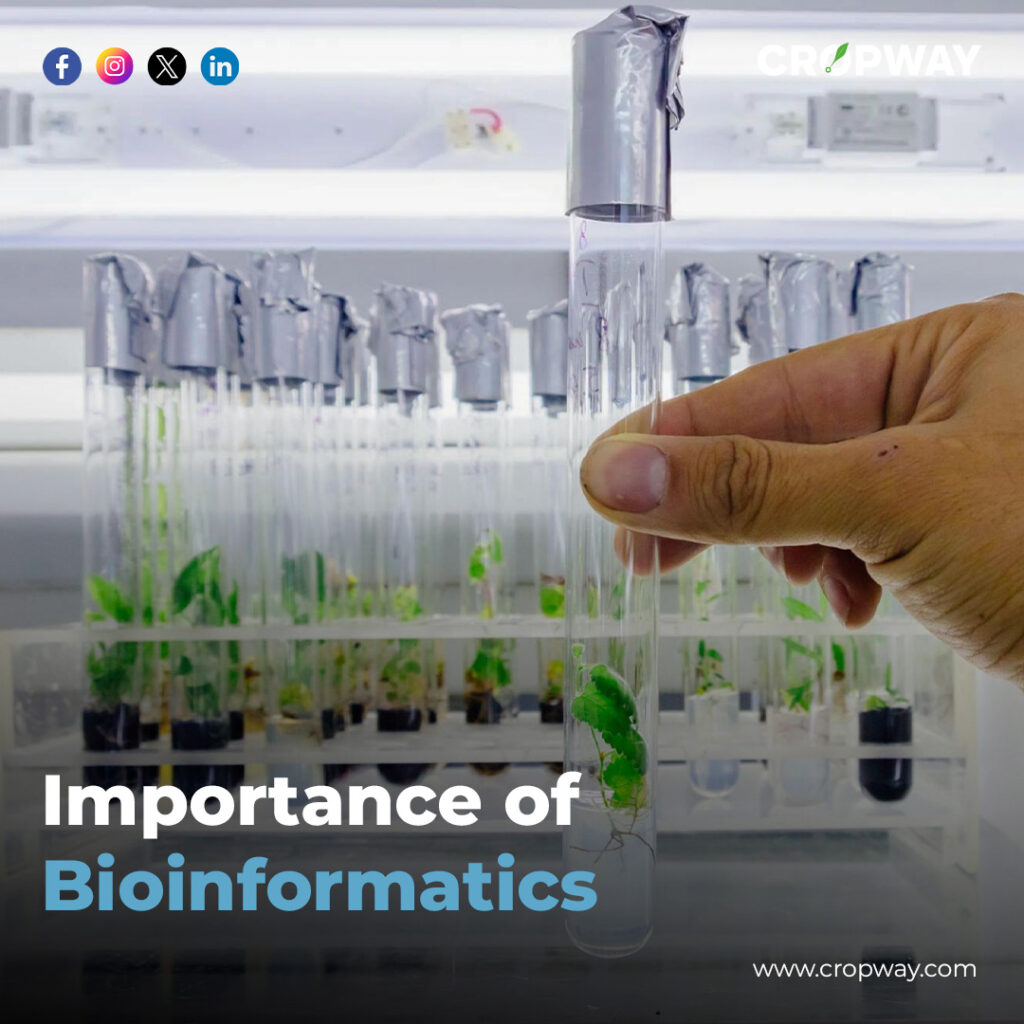
Bioinformatics applied in conjunction with biotechnology holds significant promise for tackling longstanding challenges in agriculture. The increased adoption of bioinformatics applications in agriculture can be attributed to advancements in functional genomics, Next-Generation Sequencing (NGS) tools, Whole-Genome Sequencing (WGS), data mining techniques, genotyping assays, and Genome-Wide Association Studies (GWAS). The mapping of traits based on sequencing necessitates high-performance computing (HPC) facilities and expertise. The surge in data, aligned with the need for visualization, integration, analysis, prediction, and management, has empowered breeders, biotechnologists, and agricultural scientists to effectively address relevant issues.
Tools in the field of Bioinformatics
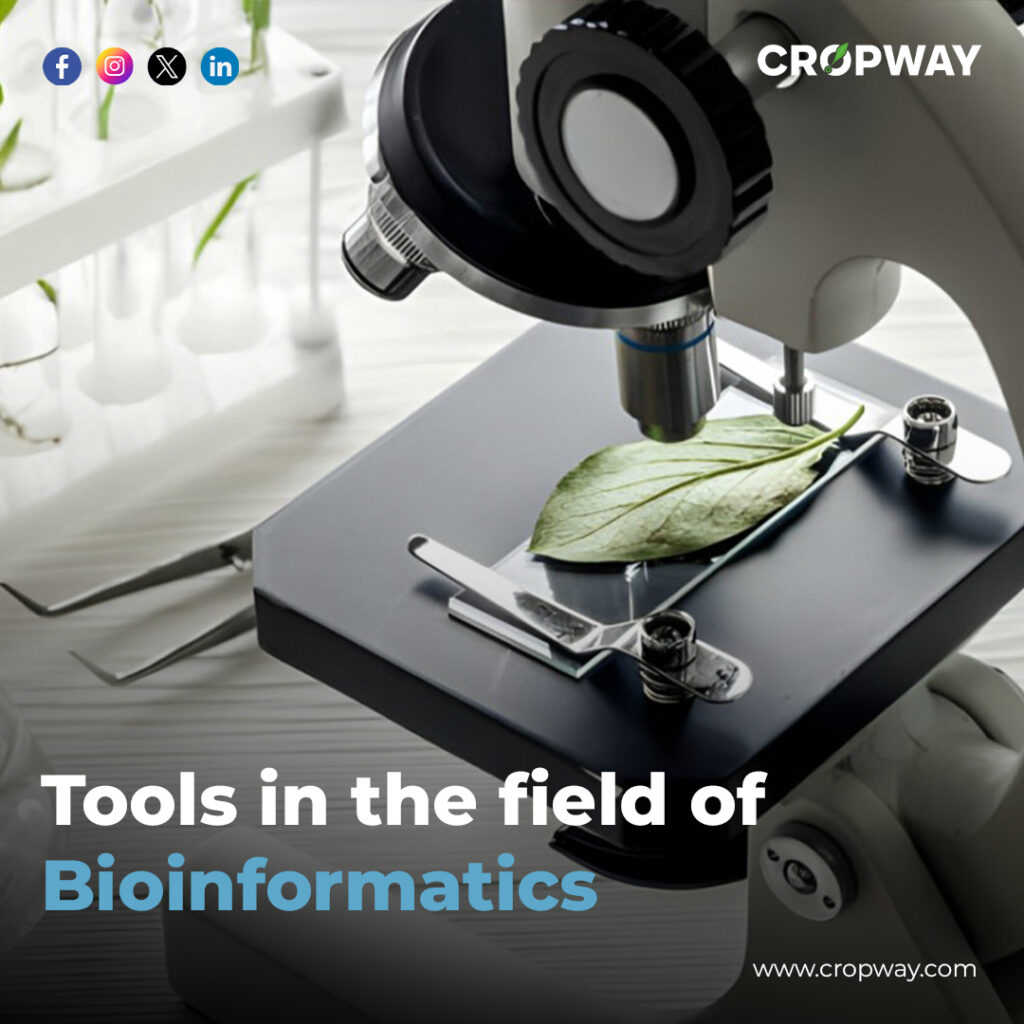
The increased adoption of bioinformatics applications in agriculture is attributed to advancements in functional genomics, Next-Generation Sequencing (NGS) tools, Whole-Genome Sequencing (WGS), and data mining techniques, including genotyping assays and Genome-Wide Association Studies (GWAS). Techniques such as QTLseq and MutMap, which involve sequencing-based trait mappings, demand high-performance computing facilities and specialized expertise. The rising volume of data, coupled with the need for visualization, integration, analysis, prediction, and management, has empowered breeders, biotechnologists, and agriculture scientists to tackle crucial issues. However, some researchers in agriculture may lack proficiency in bioinformatics tools and databases, potentially leading to missed opportunities or misinterpretation of information.
a) Genomics in Agriculture: The application of genomics in agriculture aims to enhance the productivity and sustainability of crop and livestock production. It expedites varietal development, enhances precision in genetic improvement, and reduces the need for extensive phenotypic trials. The integration of genomics with crop biotechnology, relying on computational methods, has evolved into a specialized discipline. Scientists leverage genomic data to identify genetic markers linked to desirable traits, facilitating the transfer of these traits to different organisms. This research contributes to improving the quality and quantity of agricultural production. Globally, there has been a significant increase in genomics research publications, with India showing potential for further contributions, especially when combined with artificial intelligence and machine learning.
b) Proteomics in Agriculture: The application of proteomics technology has led to the identification and understanding of numerous proteins across various species, elucidating their biological functions. Proteins play a crucial role in adapting to environmental stresses and influencing plant growth and development. Abiotic and biotic factors like floods, droughts, salinity, acidity, and nutrient limitations can negatively impact crop yields. Analyzing the structure and function of proteins associated with these stress factors contributes to the development of stress-resistant and tolerant crops. India has contributed publications in the range of 10 to 21 percent of the global output in the field of proteomics.
c) NGS and Agriculture: Next-Generation Sequencing (NGS) technologies have become invaluable tools for researchers and breeders in enhancing the health and productivity of crops and livestock. NGS has the potential to significantly impact the crop improvement process, offering capabilities such as whole-genome sequencing (WGS), transcriptome sequencing, advanced haplotype detection, metagenomics, and high-throughput genotyping for genome selection (GS). It aids in identifying target genes for RNA interference (RNAi) and genome editing to develop disease-resistant and climate-resilient crops. NGS, combined with advanced bioinformatics pipelines, has played a crucial role in discovering noncoding RNAs and microRNAs that regulate agriculturally important traits. Indian scientists have contributed in the range of 10 to 27 percent in the field of NGS in Agriculture over the years.
Key Areas for Focus in Indian Agriculture
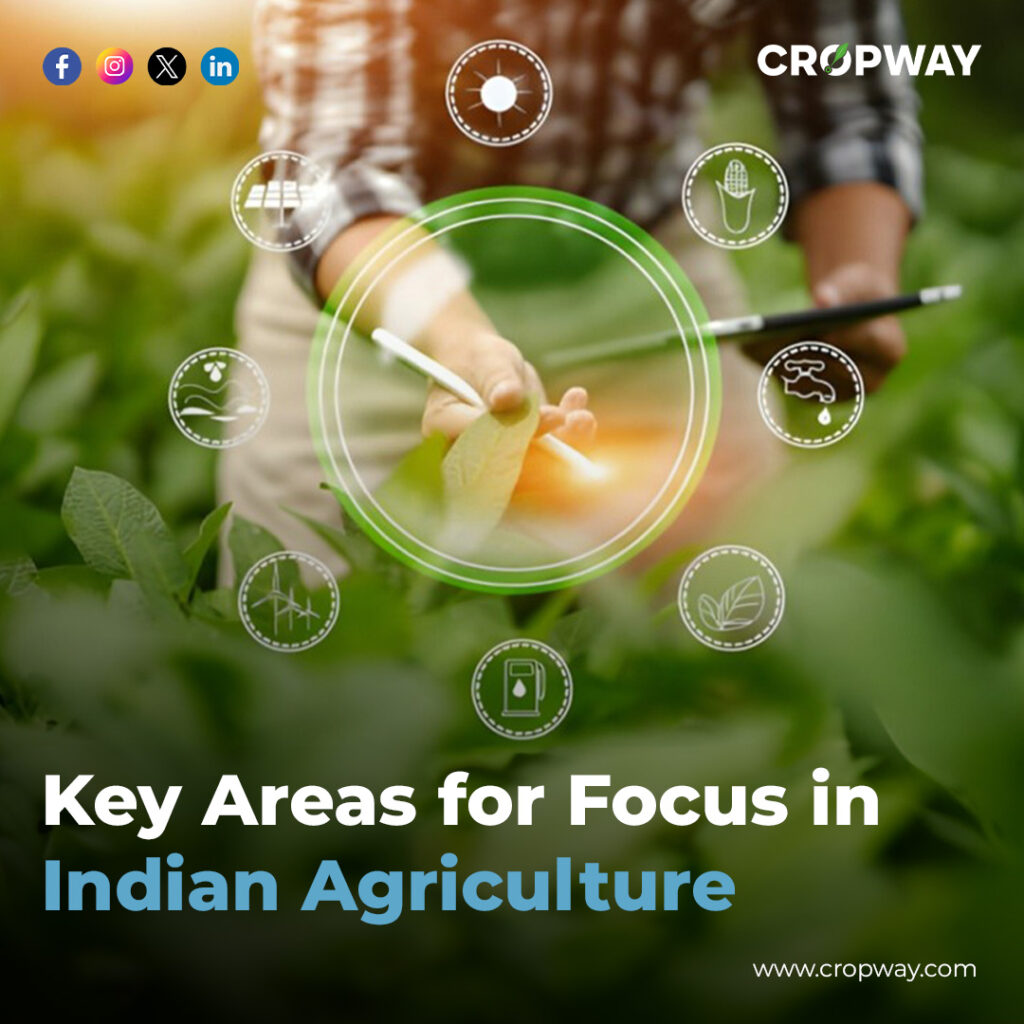
Agriculture is a complex interplay of various physical, chemical, and biological elements that work together to enhance productivity. In contemporary India, agriculture is transitioning rapidly from the green revolution to an evergreen revolution. Primary concerns in current agriculture include meeting the growing food demand of the increasing population, ensuring sustainability amidst chemicalization and industrialization, adapting to evolving technologies, and addressing the challenges posed by climate change. In this era of abundant knowledge, agriculture is viewed as a dynamic system, with plants and soil being crucial interactive components.
Biotic and abiotic interactions, especially those affecting crops, are constantly changing. The environment’s overall impact can lead to short or long-term genotypic and phenotypic alterations in plants and other organisms, potentially giving rise to new genetic, molecular, and biosynthetic pathways. Documenting the connections between conditions and changes within the system helps understand the response mechanisms.
Armed with this knowledge, biologists and agricultural scientists can devise strategies to tackle challenges such as climate change, declining crop productivity, biosafety, and biosecurity. Genome analysis, coupled with bioinformatics tools, aids in predicting gene function and defining their functional categories, expediting the development of improved crop varieties.
What is the reason behind the use of bioinformatics?
The recent surge in voluminous data in genomics, proteomics, transcriptomics, and metabolomics necessitates the use of computational techniques to extract biological insights from literature and public databases. To effectively address the challenges of analysis and interpretation in modern agriculture and implement timely solutions, computing applications are becoming increasingly viable in agricultural sciences. The integration of information on key biological processes aims to achieve a comprehensive understanding of organismal biology as a long-term objective. Hence, the justification for fortifying the rapidly evolving field of Bioinformatics is rooted in this need.
Research and developmental considerations:
Our comprehension of fundamental biology is being advanced by comparing organisms at varying evolutionary distances, aiming to reconstruct both the tree of life and the origins of crucial phenotypic traits. Additionally, there is a growing anticipation that bioinformatics will contribute to the development of computational models, both qualitative and quantitative, enabling the capture, storage, and maintenance of biological models that elucidate experimental observations.
Bioinformatics algorithms encompass research across all facets of computational biology, with a focus on discrete algorithms addressing significant issues in molecular biology, genomics, and proteomics. These algorithms should be computationally efficient, implemented, and tested in simulations and real datasets, delivering new biological insights. They cover areas such as genomics, sequence analysis, gene and signal recognition, alignment, molecular evolution, phylogenetics, structure determination or prediction, gene expression and networks, proteomics, functional genomics, and drug design.
Prominent bioinformatics tools include the BLAST program for homology searching, GENSCAN, GENIE for gene-finding, SAPS for statistical analysis of protein sequences, CLUSTAL, ITERALIGN for multiple sequence alignment, r-SCAN STATISTICS for target array clustering, and over-dispersion analysis. These tools are widely used by researchers in molecular biology and medicine, with the BLAST protocol handling over one lakh queries daily at the National Center for Biotechnology Information (NCBI) in Washington, DC.
Conclusion:
Over the past two decades, bioinformatics has made substantial contributions to agriculture, particularly with the advent of next-generation sequencing, high-throughput proteomics, metabolomics, phenomics tools, and precision breeding. The application of bioinformatics in genomics studies, including NGS, omics studies, marker discovery, and DNA sequence data mining, has progressed significantly, playing a pivotal role in various aspects of agriculture.
Modern biotechnology-driven breeding methods, such as genome-wide association studies (GWAS), SNP genotyping, genotyping-by-sequencing (GBS), and genome editing, heavily rely on computational biological tools. Bioinformatics is crucial for gene function annotation, protein modeling, and the identification of novel metabolites, directly influencing the success of new biotechnology tools in crop improvement programs, as well as the study of microbes, pathogens, and pests.
The potential applications of bioinformatics in agriculture continue to evolve, and addressing individual and organizational challenges requires strategic and policy interventions. Implementing necessary strategies necessitates support from the National Agricultural Research and Extension Systems (NARES) to harness the benefits of this emerging science in agricultural education.
Organizations like the National Academy of Agricultural Research Management (NAARM) and the Indian Agricultural Statistics Research Institute (IASRI) play a vital role in capacity building for scientists and students within NARES. The effective use of bioinformatics in agricultural research calls for comprehensive education in bioinformatics to ensure suitable experimental design and analyses. Proactive steps by NARES, supported by dedicated budgetary allocations, infrastructure development, and curricular changes, are essential for this purpose.
You might also want to read our article on Drones in Farming


